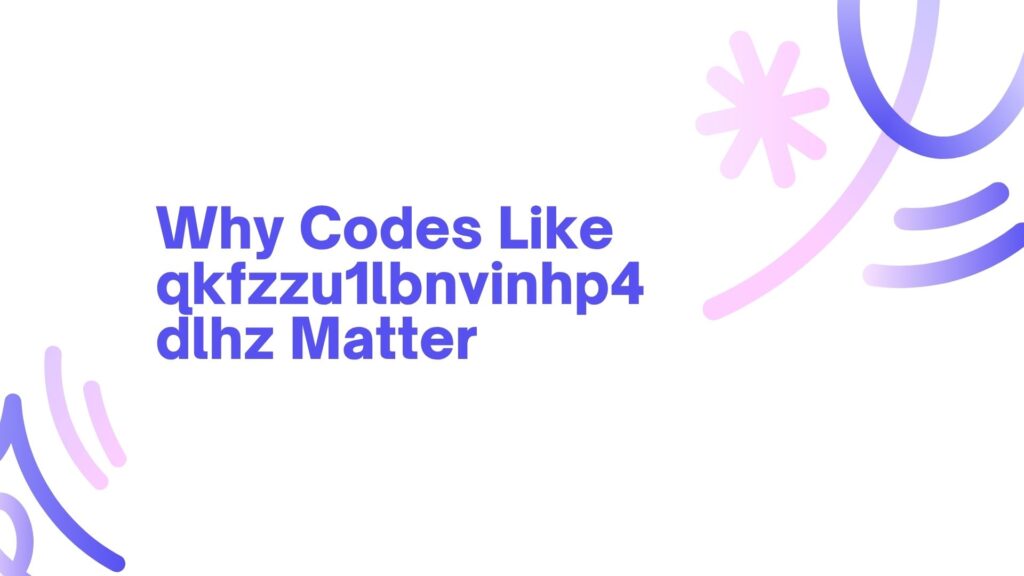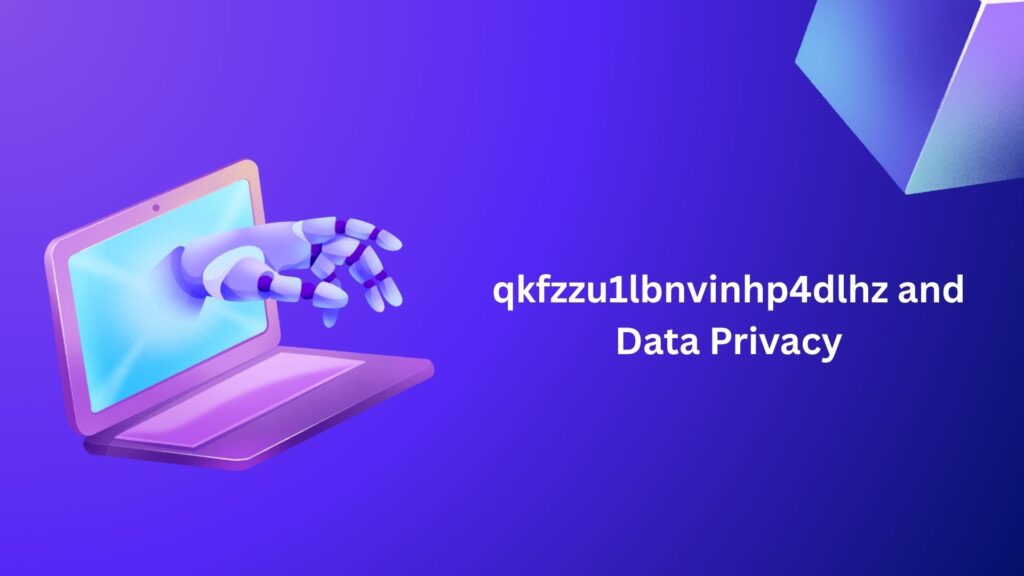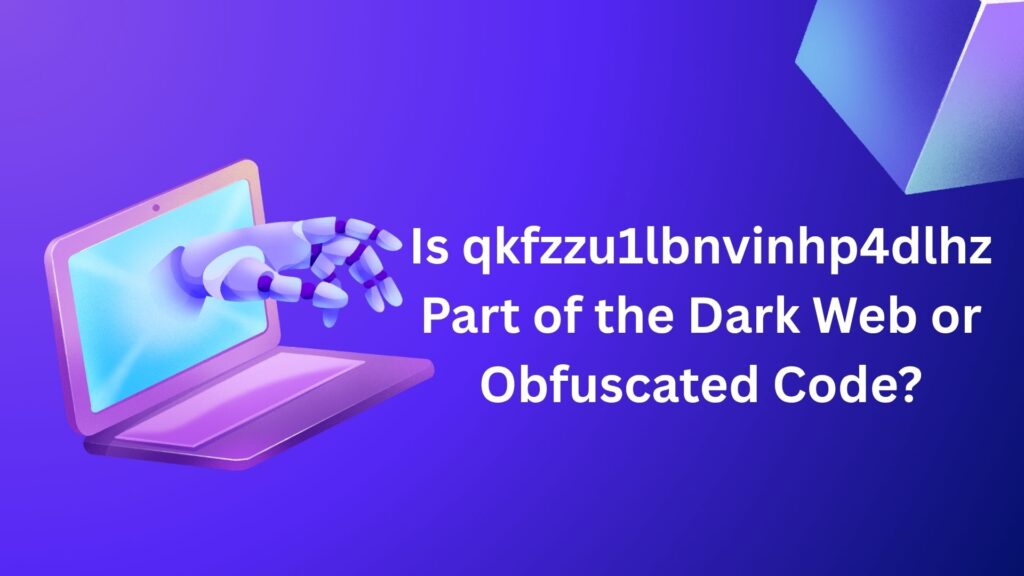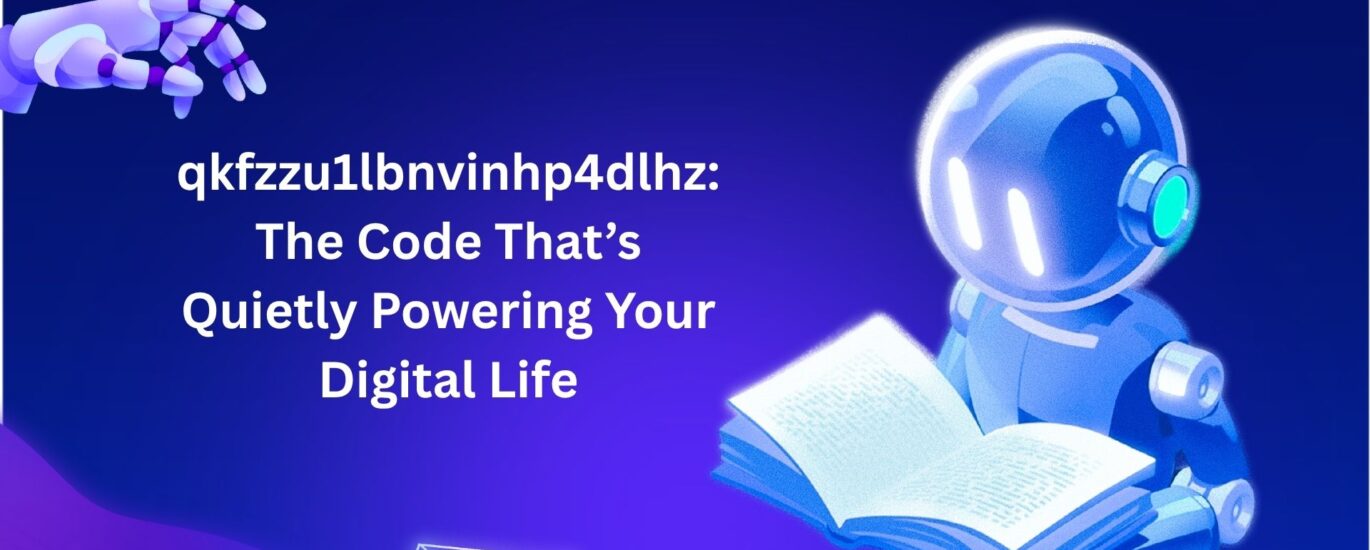In the vast and ever-expanding world of digital technology, there are countless codes, protocols, scripts, and algorithms that operate behind the scenes—so discreetly that most users never notice them. One such enigmatic yet quietly significant string is qkfzzu1lbnvinhp4dlhz. At first glance, this jumble of characters may seem like a randomly generated string, perhaps a meaningless snippet from a password generator. However, for those attuned to the deeper mechanics of the internet and software infrastructure, qkfzzu1lbnvinhp4dlhz could be the identifier, encryption key, or hashed value that acts as a backbone in our seamless digital experiences.
From securing your sensitive information to enabling cross-platform data access, this alphanumeric sequence has become part of a new wave of silent technologies that quietly shape the way our digital lives function.
Table of Contents
Understanding the Nature of Alphanumeric Codes in the Digital World
Before we dive into the actual implications and applications of qkfzzu1lbnvinhp4dlhz, it is crucial to understand the significance of alphanumeric strings in the digital ecosystem. These sequences are often used in cryptographic systems, database indexing, session management, and even software activation keys. Whether it’s a UUID (Universally Unique Identifier), an API key, or a session token, alphanumeric strings like this serve as secure, unique, and efficient identifiers.
Their design is often the result of complex algorithms that combine randomness with structure, allowing systems to generate millions or billions of such keys without any overlap or duplication. In that sense, qkfzzu1lbnvinhp4dlhz could very well be an integral part of a larger system—possibly tied to cloud storage access, end-to-end encryption mechanisms, or data mapping services used by some of the world’s largest tech platforms.
Why Codes Like qkfzzu1lbnvinhp4dlhz Matter

We often assume that the apps and services we use daily—from email and social media to cloud drives and banking platforms—function through easy-to-understand interfaces. But what lies beneath are layers of complex structures made up of secure coding and cryptographic techniques. Codes like qkfzzu1lbnvinhp4dlhz are more than just digital noise; they represent secure keys, hashed data, unique IDs, or pointers within a large-scale distributed network. Their importance cannot be overstated.
Imagine logging into a service where your session token is compromised or duplicated—this could lead to data theft or loss of privacy. This is why unique and unguessable strings like qkfzzu1lbnvinhp4dlhz are embedded deeply into our systems. They might be powering user authentication, content delivery, API requests, or even acting as tracking IDs that ensure personalized content reaches you efficiently and securely.
The Role of qkfzzu1lbnvinhp4dlhz in Cryptographic Systems
One of the most common uses for strings like qkfzzu1lbnvinhp4dlhz is in cryptographic applications. In a world where cybersecurity threats are evolving rapidly, ensuring data confidentiality and integrity is paramount. Encryption protocols such as AES (Advanced Encryption Standard), RSA (Rivest–Shamir–Adleman), and SHA (Secure Hash Algorithm) often generate and utilize alphanumeric strings like qkfzzu1lbnvinhp4dlhz. These strings act as either keys for encryption/decryption or as hash values that verify data integrity.
In some systems, such keys are dynamically generated for each session and then discarded, making them nearly impossible to hack or intercept. It is not a stretch to assume that qkfzzu1lbnvinhp4dlhz could be serving as a session-specific private key or acting as a secure hash to validate transactional data on a distributed ledger or blockchain platform.
Unique Identifiers and API Tokens
Another possible interpretation of qkfzzu1lbnvinhp4dlhz is that it serves as an API token or a unique identifier for a digital object, user session, or device. In systems that rely heavily on microservices or third-party integrations, such as social networks, payment gateways, or logistics APIs, the use of unique keys ensures the right data is exchanged between the right systems without compromise. When an app accesses a service like Google Maps, it uses a key—often a string resembling qkfzzu1lbnvinhp4dlhz—to authenticate the request.
This not only validates the app but also keeps track of usage limits, permissions, and access rights. The string might also be used in cloud computing environments like AWS or Azure, where each function, container, or instance is tagged with a unique ID for monitoring and control. This further cements the role of qkfzzu1lbnvinhp4dlhz as a backbone in efficient, secure service delivery.
qkfzzu1lbnvinhp4dlhz and Data Privacy

The privacy of digital users has become a hot-button issue across the globe. With privacy regulations such as the GDPR in Europe and the CCPA in California, digital platforms must ensure that personal data is handled responsibly. Codes like qkfzzu1lbnvinhp4dlhz might be part of pseudonymization techniques, where personally identifiable information (PII) is replaced by a code, making it useless to anyone without the decryption key. This anonymized data can then be safely stored, processed, or analyzed without risking user privacy.
In such scenarios, qkfzzu1lbnvinhp4dlhz is not just a string of characters—it’s a privacy shield. It ensures that your name, email, or health records are not directly accessible, thus providing an extra layer of security against data breaches and identity theft.
Behind-the-Scenes in Content Delivery Networks
Modern websites, especially those delivering high volumes of media content such as videos, images, and real-time data, rely on Content Delivery Networks (CDNs) to ensure fast and reliable access. These CDNs often use unique hashed keys to tag resources, manage caching strategies, and authenticate users. A string like qkfzzu1lbnvinhp4dlhz may be a resource ID within a CDN, directing users to the closest and most efficient server based on geolocation and network conditions.
Every time you click on a YouTube video or stream a Netflix show, there’s a high likelihood that multiple keys and tokens—including something like qkfzzu1lbnvinhp4dlhz—are working behind the scenes to ensure your experience is seamless, secure, and fast.
Machine Learning and Data Annotation Tags
With the rise of AI and machine learning, enormous datasets are required to train models. To manage and label this data, systems use tagging mechanisms that involve unique identifiers. qkfzzu1lbnvinhp4dlhz might be such a tag—used internally by a machine learning platform to mark a specific image, voice sample, or data entry. These tags help in sorting data, tracking versions, and ensuring that specific datasets are used in the right context.
In AI workflows that use supervised learning, every training sample must be accurately tagged, and identifiers like qkfzzu1lbnvinhp4dlhz are essential in keeping the training pipeline structured and error-free.
Possibilities of Blockchain & NFT Integration
The blockchain ecosystem thrives on transparency, decentralization, and immutability. At the heart of blockchain lies the concept of a unique cryptographic hash—a string that uniquely identifies every transaction, block, or smart contract. Strings like qkfzzu1lbnvinhp4dlhz could easily be part of this world. In the case of NFTs (Non-Fungible Tokens), every digital asset is tied to a unique hash that represents ownership, metadata, and history. If qkfzzu1lbnvinhp4dlhz is such a hash, it could be the digital fingerprint of an artwork, a virtual land deed in the metaverse, or a record of a decentralized transaction stored forever on a public ledger.
Is qkfzzu1lbnvinhp4dlhz Part of the Dark Web or Obfuscated Code?

With its complex, unrecognizable format, some may wonder if qkfzzu1lbnvinhp4dlhz is linked to more secretive digital environments such as the dark web or obfuscated codes in malware. In cybersecurity, malicious actors often hide command-and-control (C2) servers, exploit payloads, or encrypted URLs using obfuscated code. While this doesn’t mean qkfzzu1lbnvinhp4dlhz is malicious, its cryptic form does resemble many such hidden strings.
Penetration testers and ethical hackers frequently encounter similarly obfuscated strings while dissecting malware or network traffic. In these instances, tools are used to de-obfuscate or trace the source and purpose of such codes—whether they’re part of a botnet, ransomware campaign, or just a benign software component.
The Future of qkfzzu1lbnvinhp4dlhz and Similar Digital Keys
As digital technology continues to evolve and expand into quantum computing, Web3, and the Internet of Things (IoT), the role of unique digital identifiers like qkfzzu1lbnvinhp4dlhz will become even more prominent. In IoT networks, each device needs a secure identity and communication channel. In Web3, every interaction might be encoded into blockchain transactions. In the post-quantum cryptography era, secure, random strings will become central to keeping our digital infrastructure intact. Therefore, codes like qkfzzu1lbnvinhp4dlhz are not just a current necessity but a foundational block for the future of digital trust, decentralization, and automation.
Final Thoughts
In conclusion, while the code qkfzzu1lbnvinhp4dlhz might appear meaningless at first, it symbolizes the hidden complexity and intelligence embedded in our modern digital landscape. It is a powerful reminder that behind every click, tap, and swipe lies a network of secure, automated processes powered by identifiers, tokens, hashes, and keys.
Whether it’s safeguarding your data, authenticating your sessions, or powering AI systems, such codes play a quiet yet indispensable role. As we continue to move into a more digitized and interconnected world, the importance of cryptographic strings like qkfzzu1lbnvinhp4dlhz will only grow—making them the unsung heroes of our digital age.
Read More Blogs –






